Jalppajin Memil - Seochon Branch (잘빠진메밀 서촌)
359.5M 2021-03-18
41-1, Jahamun-ro, Jongno-gu, Seoul, Korea
+82-70-4142-1214
This is a Korean cuisine located in Jongno-gu, Seoul. A restaurant that uses noodles made with 100% buckwheat directly by the chef. The best menu at this restaurant is dumpling hot pot.
Musée d’art Sungkok (성곡미술관)
364.7M 2021-02-16
42, Gyeonghuigung-gil, Jongno-gu, Seoul-si
+82-2-737-7650
Le musée Sungkok est une galerie d’art construite par la corporation coréenne Ssangyong, dans le but de promouvoir l’art coréen. Pour les écrivains talentueux, une exposition individuelle peut avoir lieu.
Pour le développement de l’art en Corée, il y a le calendrier des expositions. Enfin, il y a aussi une exposition internationale, dans le but de maintenir un lien avec le courant des arts provenant de l’étranger. Or ces dernières représentent plus de 15 expositions par an.
On peut approximativement diviser la galerie en 2 parties: la partie principale où se tiennent les expositions et l’annexe où se trouvent diverses facilités.
Dans le parc des sculptures, une centaine d’arbres d’espèces varies, de plusieurs décennies forment une forêt. Cet assemblage, arbres et sculptures, trouve aussi son sens artistique. Dans ce bois, il y a un chemin que vous pourrez suivre afin de découvrir cet espace de 7,450 m2. Sculptures de grands artistes coréens et étrangers ne font qu’harmonie avec la nature.
Dans le cas où vous souhaiteriez acheter un objet artisanal à un prix raisonnable, il y a une boutique d’objets d’art au sein du bâtiment principal. Certains produits viennent du musée et d’autres viennent d’artistes reputes; lieu où vous pourrez trouver nombre de petites choses qui font plaisir.
Après le musée, vous pouvez vous reposer dans la maison de thé. Cette dernière peut vous offrir une délicieuse tasse de thé que vous apprécierez encore plus devant la beauté de chaque saison qui teinte le parc des sculptures. Au printemps, la fraîcheur des senteurs de la nature, l’été, la forêt vivifiée, l’automne, le changement des couleurs et l’hiver, la blancheur de la neige. Des tables en terrace vous attendent.
Peut-être désirerez-vous vous arrêter, souffler et respirer l’air frais, contemplant votre voyage et votre vie. La maison de thé vous propose une variété de thés, cafés et cookies. Les spécialtés de la maison sont le thé au citron et les cookies aux noix, nous vous les recommandons.
Boan1942 (보안1942)
366.4M 2023-09-20
33, Hyoja-ro, Jongno-gu, Seoul
Avant de devenir un centre consacré à l'art, Boan1942 était un lieu consacré aux repos des voyageurs entre 1942 et 2005. Le lieu a été rénové en espace culturel en 2017 sous le concept de "Boanstay."
Boan1942 propose différents espaces thématiques comme un café, un espace culture, des ateliers workshop, un magasin de livres, un espace pour les expositions, etc. Situé à Seochon, un haut lieu de la culture à Séoul, Boanstay offre également une superbe vue de l'aspect historique de Séoul notamment sur le palais Gyeongbokgung Palace, Cheong Wa Dae, et le village des hanok de Seochon.
<Credit: Boanstay>
Hanok Guesthouse Dongchonchae [Korea Quality] / 한옥 게스트하우스 동촌재 [한국관광 품질인증/Korea Quality]
404.4M 2021-03-26
21-10, Jahamun-ro 11-gil, Jongno-gu, Seoul
Built in 1939, Dongchonchae was designated as Seoul Well Hanok by the Seoul Metropolitan City in 2016. In 2020, this hanok (traditional Korean house) received the Certificate of KOREA QUALITY from the Korea Tourism Organization in the Heritage Hanok field in recognition of its historicity and quality of services. Dongchonjae is located in the western side of Gyeongbokgung Palace, at Seochon. When one passes through its main gate, one sees the yard, with anchae (women's quarters), sarangchae (men's quarters), and byeolchae (detached quarters) surrounding the plot. Anchae has four rooms, daecheong (wood-floored main hall), a kitchen, and a restroom. One of the rooms is used for tea ceremonies as well. Outside of the sarangchae and byeolchae, which are the living spaces for the owners, visitors have free access to the numaru (raised open floor) and the yard. The anchae’s rooms “Bom” and “Yeoreum” can accommodate 2 to 3 adults each, while the rooms “Gaeul” (Tea Room) and “Gyeoul” are optimal for two. The building is rented out as a whole, so no more than one group may stay in the building at any given time. Standard occupancy is four persons, and eight is the maximum number. There are two restrooms, one within the anchae building, one out in the backyard.
Cooking is not allowed in the kitchen, but guests are free to bring in outside food. Experience programs on offer include nighttime exploration of Seoul City Wall, tea ceremony, folk songs, and rice cake making. Additional payment is only required for rice cake making. Guests may choose between two types of complimentary breakfast: Korean, which comes with rice, soup, and three side dishes; and Western, which comes with bread, salad, and coffee. There are a 100-in screen and mini projector for film watching in the yard or daecheong. Towels, toiletries, hair dryer, bottled water, traditional tea, and capsule coffee are included. The kitchen is equipped with kitchen utensils, a microwave, and a coffee pot, enough for instant foods. Guests also have access to refrigerator and washing machine
GOGHI (고희)
408.6M 2021-03-26
17, Jahamun-ro 12-gil, Jongno-gu, Seoul
+82-2-734-4907
A good café to have a meal as it has a brunch menu as well as drinks. This cafe is located in Jongno-gu, Seoul. The representative menu is americano.
Nuwa [Korea Quality] / 누와 [한국관광 품질인증/Korea Quality]
444.7M 2021-03-29
3-1, Pirundae-ro 5na-gil, Jongno-gu, Seoul
This hanok (traditional Korean house) is located deep in the Seochon Village, west of Seoul’s Gyeongbokgung Palace. Its tasteful renovation of a small 33 m2 hanok made it highly popular among the younger guests. The courtyard has a low maple tree and tastefully arranged stones, while the hanok is capable of accommodating up to 2 persons.
This L-shaped hanok has a full window wall facing the living room, which is furnished with a low walnut table and a bathtub. Visitors can enjoy premium tea at the table. The bathtub, which is connected to the table at one end, can be used mainly for a foot bath with bath salts that assist circulation. There is also a restroom in the building.
Nuwa’s bedroom has a circular window, much like the full moon, with a view of the garden and the fringes of the Inwangsan Mountain.
Village Seochon (서촌마을)
464.4M 2021-07-14
45, Pirundae-ro, Jongno-gu, Seoul
Le village Seochon se situe à l'est du palais Gyeongbokgung. Il s'agit d'un lieu composé à la fois de maisons traditionnels hanok, de petites ruelles paisibles, mais aussi de nouveaux magasins qui forment une très belle harmonie dans le village. En parcourant les nombreuses petites ruelles des lieux, vous pourrez aussi apprécier plusieurs peintures murales très colorèes. Ce village se distingue donc par son côté à la fois pittoresque mais aussi raffiné.
Marché de Tongin (통인시장)
473.1M 2022-12-13
18, Jahamun-ro 15-gil, Jongno-gu, Seoul
+82-2-722-0911
Le marché de Tongin a été crée en juin 1941 sous l’occupation japonaise. Après la guerre du 25 juin, le région de Seochong a connu une hausse de la consommation causée par la soudaine croissance démographique. Des boutiques et des magasins se sont créés sous forme de marché public.
Le marché public Tongin se compose de 75 restaurants dont principalement des restaurants et des magasins de banchans (petits plats d'accompagnements) qui livrent des produits frais : poissons, fruits et légumes. D’autres commerces de vêtements, chaussures et retouches sont présents sur le marché.
NUHADANG [Korea Quality] / 누하당 [한국관광 품질인증]
491.5M 2020-09-10
49-7, Pirundae-ro, Jongno-gu, Seoul
010-9692-1330
Guesthouse Nuha is a ‘hanok’ or traditional Korean house consisting of four guestrooms located in Nuha-dong, Seochon (west of Gyeongbokgung Palace, Jongno, Seoul) where many Confucian scholars and artists lived during the Joseon Dynasty.
Exuding a refined atmosphere, Guesthouse Nuha is very popular among not only domestic visitors but also foreign tourists who want to experience the flavor of Korea in a cozy hanok. All four guestrooms (An-bang, Sarang-bang, Geul-bang, and Byeol-dang) are covered with eco-friendly hanji (traditional Korean paper handmade from mulberry tree) wallpaper, and are equipped with a thick cotton-wool comforter and pillows imbued with the scent of Hinoki cypress tree to help guests relieve their fatigue.
Breakfast is served free of charge. Guests can also experience traditional Korean culture here, such as playing a Korean musical instrument (janggu or double-headed drum), playing a game of yut in the yard, or wearing hanbok (traditional Korean clothes). Although a local bus service passes through the village, it is highly recommended to take a quiet leisurely around the area.
Geumyongmun (금용문)
499.4M 2021-03-23
7, Saemunan-ro,5 ga-gil, Jongro-gu, Seoul
+82-2-731-2502
This is a Chinese (cuisine) located in Gwanghwamun Gate, Seoul. The best menu at this restaurant is dim sum. A restaurant selling authentic Chinese cuisine.
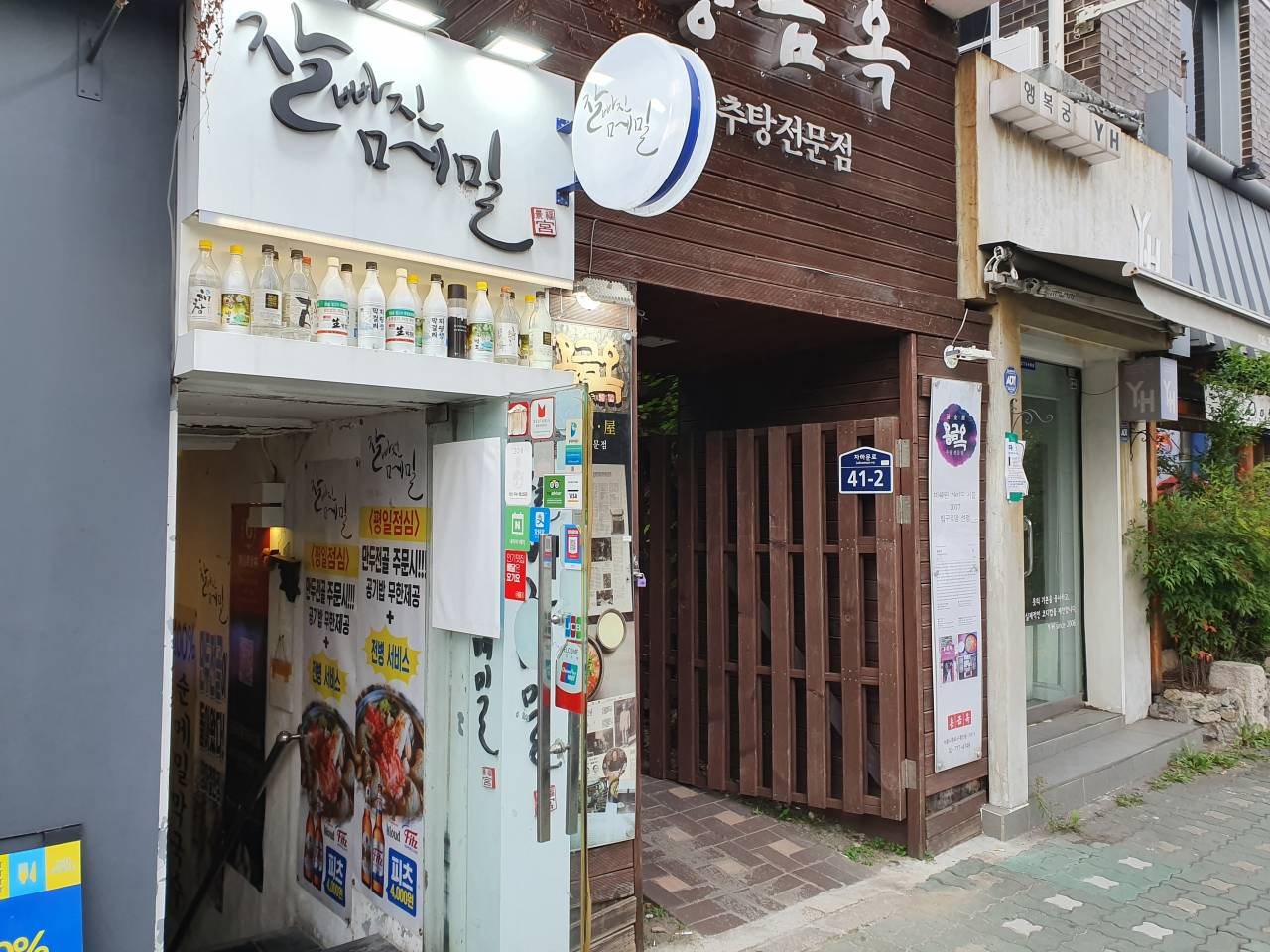
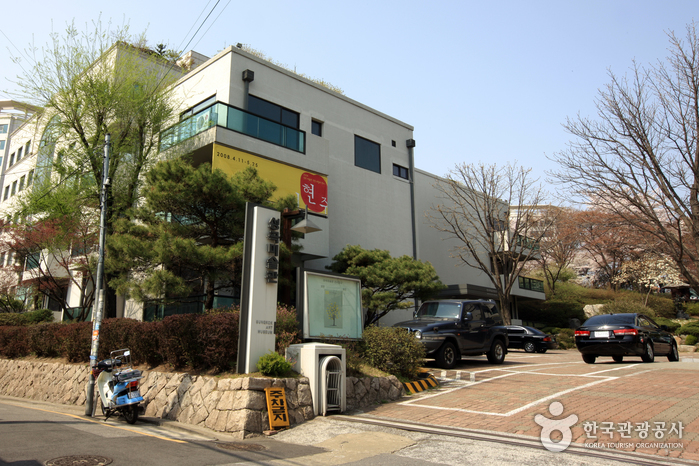

![Hanok Guesthouse Dongchonchae [Korea Quality] / 한옥 게스트하우스 동촌재 [한국관광 품질인증/Korea Quality]](http://tong.visitkorea.or.kr/cms/resource/96/2705896_image2_1.jpg)
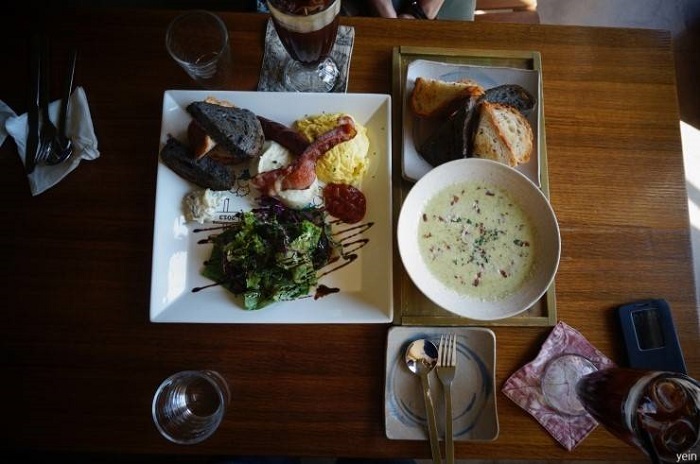
![Nuwa [Korea Quality] / 누와 [한국관광 품질인증/Korea Quality]](http://tong.visitkorea.or.kr/cms/resource/07/2707607_image2_1.jpg)
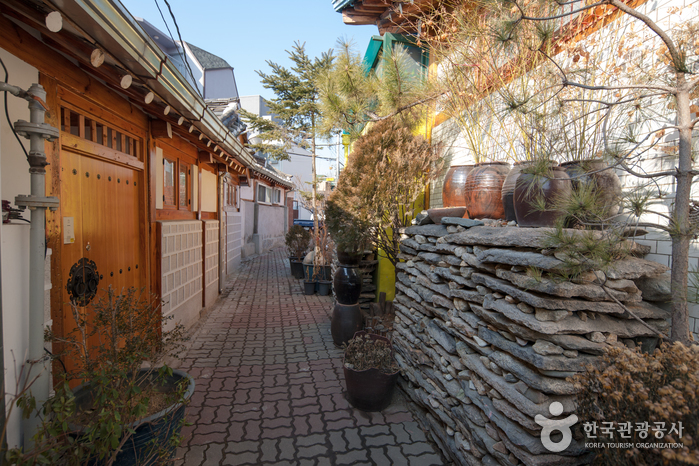
![NUHADANG [Korea Quality] / 누하당 [한국관광 품질인증]](http://tong.visitkorea.or.kr/cms/resource/58/2532358_image2_1.jpg)
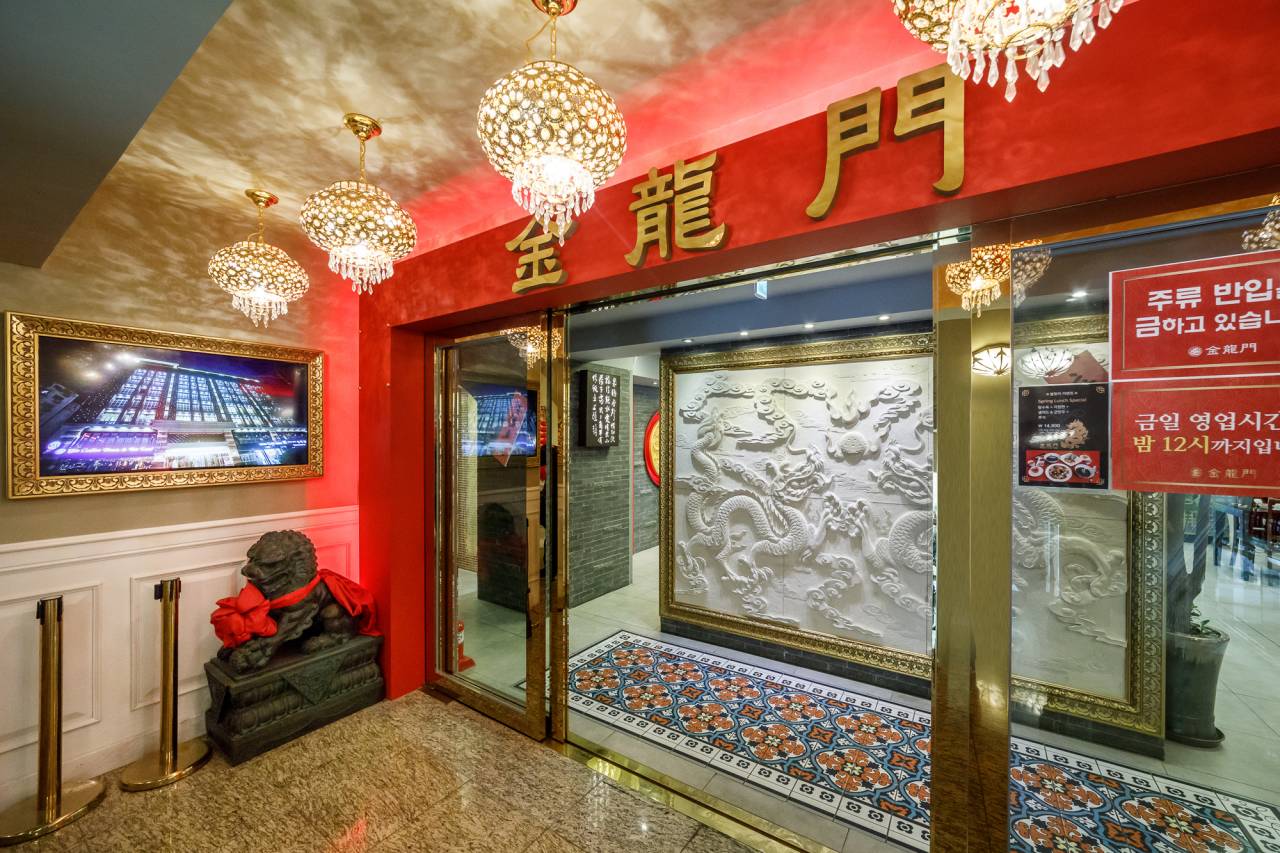
 Français
Français
 한국어
한국어 English
English 日本語
日本語 中文(简体)
中文(简体) Deutsch
Deutsch Español
Español Русский
Русский